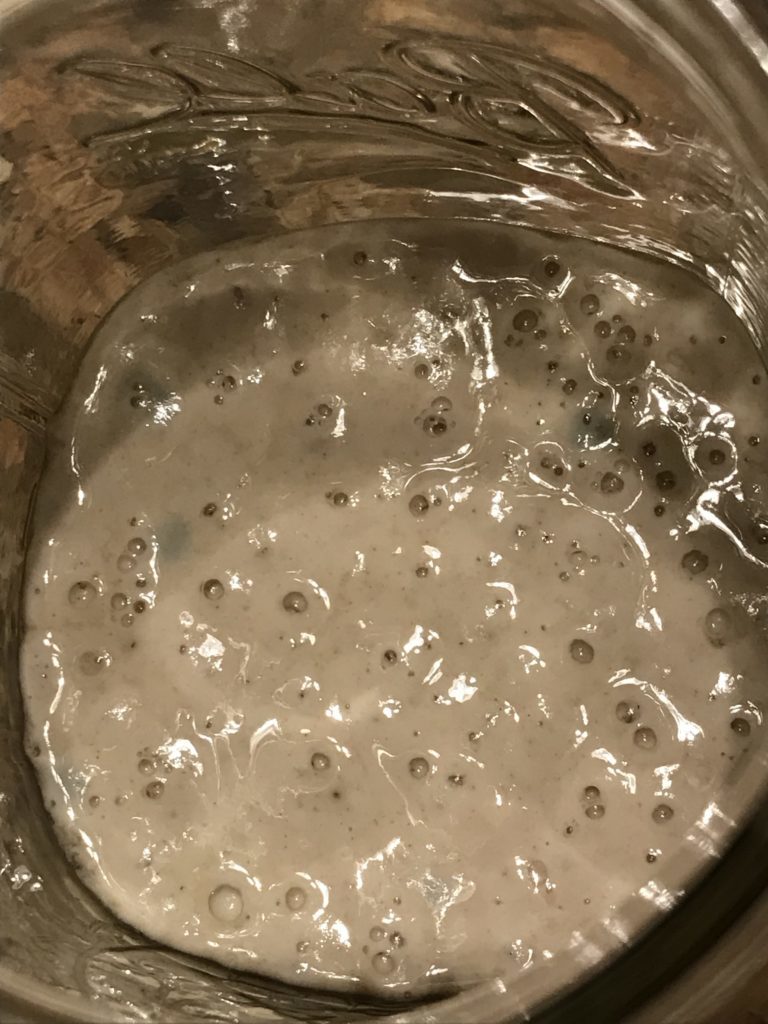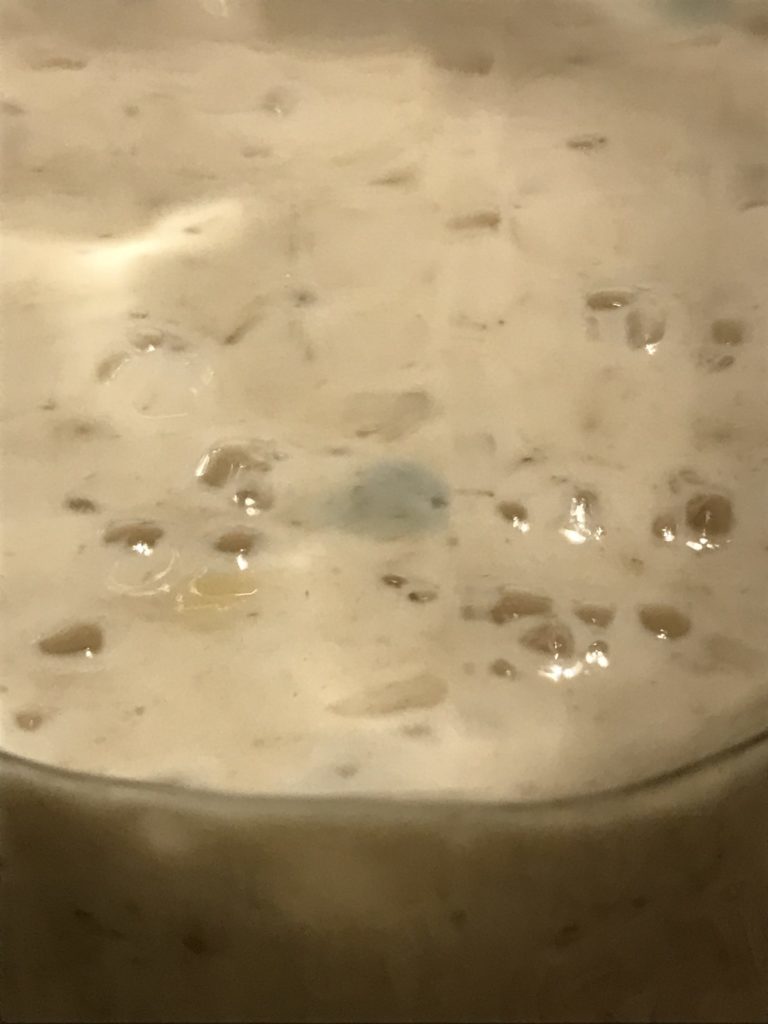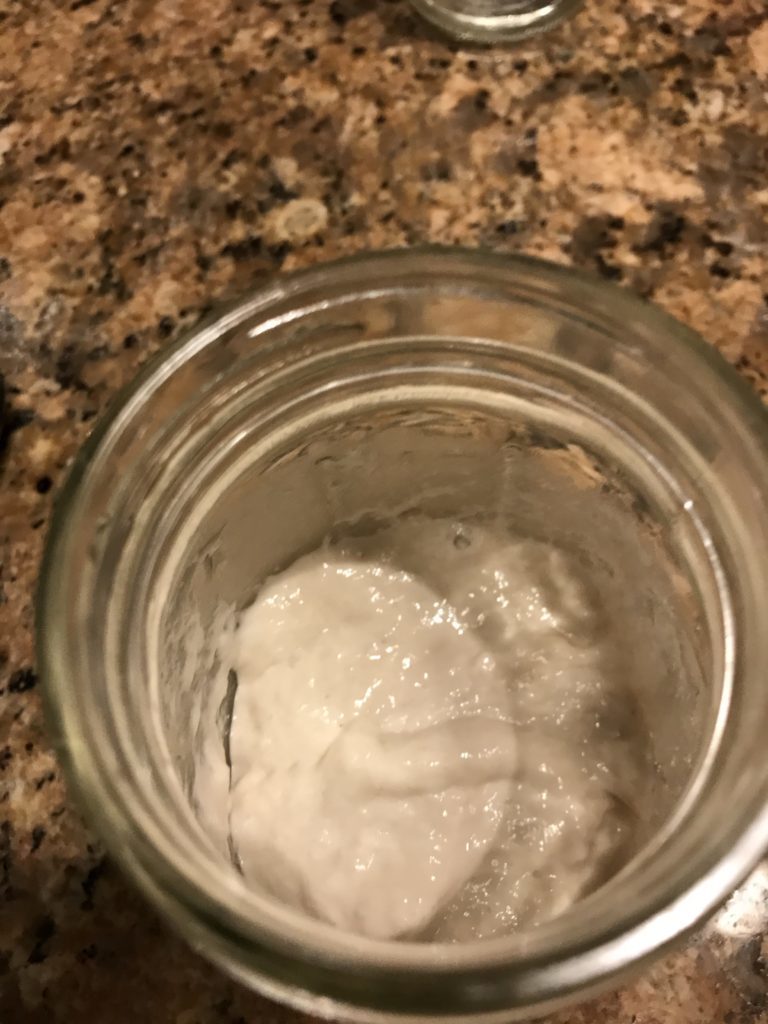When flour goes bad, it really turns. I’ve never been more relieved to see mold in a container. My water was safe! For the past week and a half, I’ve been trying to start a sourdough with equal parts water and flour. Unfortunately, if you go back to the beginning, you will see I’ve been struggling with mold.
I sterilized, scrubbed and cried. And I tried four more times. Each time, a bad rotting smell, black specks and Penicillium looking mold would develop within the second day. So I decided to go back to baking basics: this is science. Eliminate one variable at a time and set up some control batches.
First, I scrubbed all the jars and sanitized them. That didn’t work. So I switched utensils. Still not working. And then I went to glass jars. More mold. It’s not my lack of cleanliness. Whew.
Second, I decided to set up a new batch with the same flour and use bottled water. The tap kills off the wild yeast some will claim on the internet and baking shows. The black and green mold exploded in growth! Probably because the water didn’t have chemicals to slow it down.
Finally, I was getting somewhere. It’s hopefully not the water as that’s an expensive (and scary) thought. Signs are pointing to the flour being contaminated with mold spores. So I set up two jars. One with the old flour and bottle water. The second with a new type of flour (my favorite Hudson) and tap water.
Both were covered in plastic and placed in a cabinet side by side. This should effectively take out an extra day of work and by doing two controls, factors such as humidity, temperature and light would be the same and cannot skew the results.
Once again, the starter has mold, weird black specks that is either mold forming or oxidation of rust (and yes, lots of yeast colonies.) The second did grow in size and has a little bit of bubbles. The batch is beginning to take on a pleasant odor like hops, not like rotting bread. If all goes as planned, I’ll have sourdough and a recipe to follow, soon. If not, I’ll lament a little more and try again! In the meantime, now you know what to do when flour goes bad in your house.



If you want to see what happens when you neglect your sourdough starter, check out this brief video. It will show you the various stages of growth and what ultimately happens if you stop feeding your starter.

0 Comments